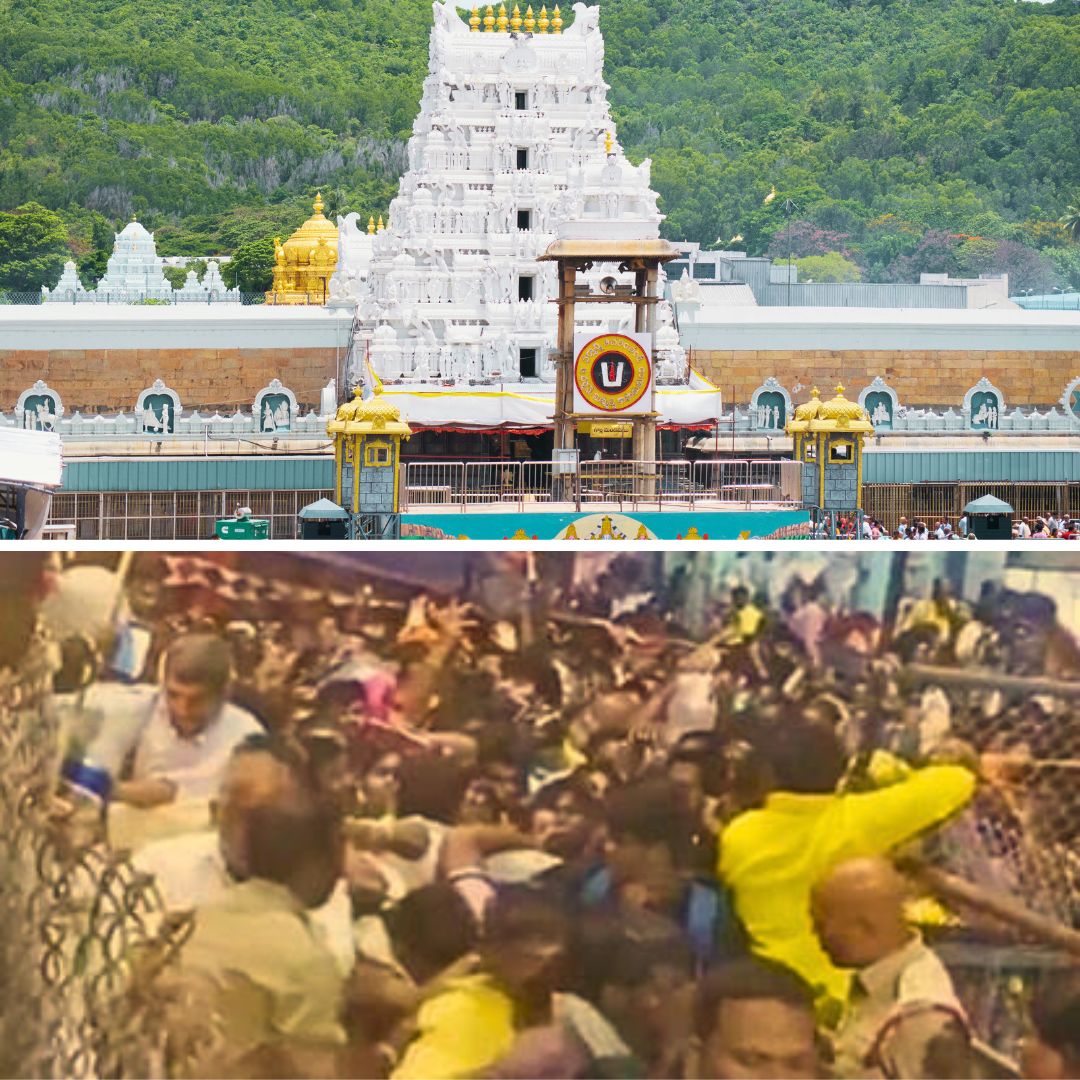Tragedy Strikes at Tirupati Temple: Stampede Claims Six Lives

The tragic stampede at the Sri Venkateswara Swamy Temple in Tirupati, Andhra Pradesh, on January 8, 2025, has left an indelible mark on the community and raised pressing concerns about crowd management during religious events. The incident, which claimed the lives of at least six individuals and left over 30 others injured, unfolded amidst the distribution of tokens for the Vaikunta Dwara Darshanam. This significant religious event, closely associated with the Vaikunta Ekadasi festival, draws thousands of devotees from across the country, each year seeking spiritual solace and divine blessings. However, the overwhelming turnout this time, coupled with insufficient preparations, turned what should have been a moment of devotion into a scene of despair and tragedy.
The Vaikunta Ekadasi festival is one of the most revered occasions in the Hindu calendar, celebrated with great fervor and devotion. Pilgrims gather at the Sri Venkateswara Swamy Temple to participate in the Vaikunta Dwara Darshanam, where they pass through a special entrance, believed to grant them liberation and a path to salvation. This unique spiritual significance makes the event a magnet for tens of thousands of worshippers. To accommodate the surge in devotees, temple authorities typically organize token distribution, ensuring an orderly sequence for darshan. However, the preparations for January 8 fell tragically short of the mark, as overcrowding and poor crowd control led to chaos.
The stampede began as devotees queued for hours, eagerly waiting for their tokens. The atmosphere, initially charged with anticipation and devotion, began to deteriorate as more people continued to join the already overcrowded lines. Tensions escalated further when the gates were suddenly opened to assist an unwell devotee. This unexpected action, rather than providing relief, triggered confusion among the waiting crowd. The tightly packed throng of devotees surged forward, pushing and shoving in an attempt to move closer to the distribution point. In the ensuing commotion, many were knocked down and trampled, resulting in a horrifying loss of life and injuries to dozens.
Witness accounts describe the panic and desperation that swept through the crowd as the stampede unfolded. Some individuals tried to pull others to safety, while others found themselves helplessly caught in the relentless wave of people. The scene turned chaotic as cries for help mixed with the commotion, and the temple premises became a site of anguish and sorrow. Medical teams and emergency responders rushed to the scene to provide assistance, but the sheer scale of the incident highlighted the critical gaps in planning and management.
The tragedy has sparked widespread criticism of the authorities responsible for organizing the event. Despite the annual influx of devotees during the Vaikunta Ekadasi festival, it appears that lessons from previous years were not adequately implemented. Questions have been raised about the adequacy of crowd control measures, the availability of sufficient personnel to manage the flow of devotees, and the readiness of medical facilities to handle emergencies of this magnitude. Critics argue that the temple authorities and local administration underestimated the scale of the gathering and failed to implement basic safety protocols, such as limiting the number of tokens distributed at a time or setting up barricades to control the crowd.
The aftermath of the incident has also brought attention to the role of local governance and the importance of collaboration between temple management and government agencies. The Chief Minister of Andhra Pradesh expressed deep sorrow over the loss of lives and extended his condolences to the bereaved families. He assured the public that a thorough investigation would be conducted to determine the causes of the tragedy and to hold those responsible accountable. Furthermore, the Chief Minister emphasized the need for stricter measures to prevent similar incidents in the future, including improved crowd management systems, enhanced medical preparedness, and better coordination between various stakeholders.
Beyond the immediate response, the stampede serves as a sobering reminder of the challenges posed by large-scale religious gatherings in India. The country is home to numerous festivals and events that draw millions of participants, each with its own unique cultural and spiritual significance. While these gatherings are a testament to India's rich traditions and collective devotion, they also underscore the critical need for effective planning and risk mitigation. The Tirupati incident highlights the importance of anticipating potential hazards, designing infrastructure to accommodate large crowds, and ensuring the availability of trained personnel to handle emergencies.
For the families of the victims, the tragedy has left a void that cannot be filled. The six lives lost in the stampede represent more than just numbers; they are individuals whose aspirations, relationships, and contributions to their communities were abruptly cut short. For the injured, the road to recovery will be long and arduous, both physically and emotionally. The incident has cast a shadow over what should have been a time of spiritual upliftment, leaving a lingering sense of grief and introspection.
As the investigation unfolds, it is imperative that the lessons from this tragedy are not forgotten. Authorities must take decisive steps to ensure that the safety and well-being of devotees are prioritized in all future events. The implementation of advanced crowd management techniques, such as real-time monitoring and automated systems, can play a crucial role in mitigating risks. Additionally, fostering a culture of accountability and continuous improvement among event organizers and government agencies is essential to prevent similar incidents.
The stampede at the Sri Venkateswara Swamy Temple on January 8, 2025, is a stark reminder of the delicate balance between devotion and responsibility. While religious events are a cornerstone of India's cultural and spiritual identity, they must be conducted with meticulous planning and unwavering commitment to safety. The tragedy in Tirupati has left a profound impact on the community, but it also presents an opportunity to learn and grow. By addressing the shortcomings exposed by this incident, authorities can honor the memory of those who lost their lives and ensure that future gatherings are a source of joy and inspiration rather than sorrow and regret.
Posted By: Shraddha
.gif)
.gif)



(1).png)

%20(600%20%C3%97%20386px)%20(600%20%C3%97%20329px)%20(500%20%C3%97%20281px)%20(450%20%C3%97%20281px)%20(450%20%C3%97%20253px)%20(386%20%C3%97%20238px).jpeg)
%20(600%20%C3%97%20386px)%20(600%20%C3%97%20329px)%20(500%20%C3%97%20281px)%20(450%20%C3%97%20281px)%20(450%20%C3%97%20253px)%20(450%20%C3%97%20250px).jpeg)
.jpg)
.jpeg)